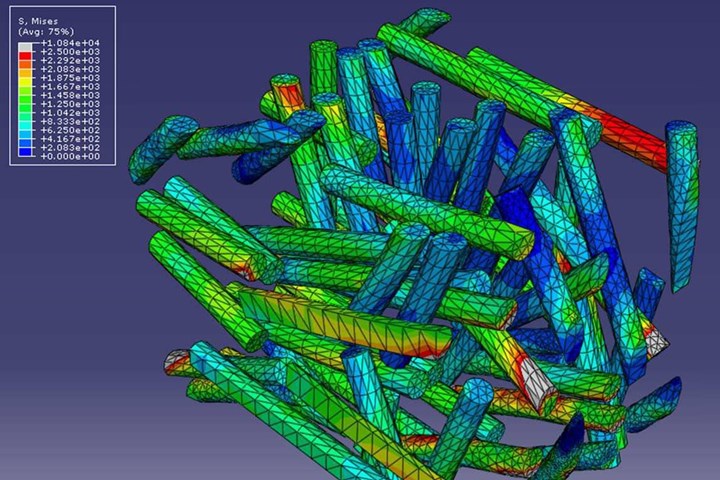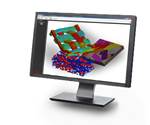Hexagon’s e-Xstream engineering presents improved Digimat software
The multi-scale material modeling software enables more comprehensive advanced composite design capabilities.

Source | e-Xstream engineering
Hexagon’s Manufacturing Intelligence (Luxembourg, U.K.) division, e-Xstream engineering, presented on June 9 its enhanced version of the Digimat multi-scale material modeling software. As part of the Hexagon 10x Integrated Computational Materials Engineering (ICME) solution — digitally merging the materials development process into one holistic system — the software extends its advanced composites design capabilities across all scales.
To manage the complexity of composites development, Digimat’s integration with molecular dynamics software extends micro-level capabilities to predict a material’s properties based on its chemical structure. On the meso-level, the direct engineering workflow for unidirectional composites has also been enhanced, enabling ply properties prediction based on their physical and virtual constituents. Furthermore, Digimat reportedly can characterize the effect of defects, such as porosity or gaps from automatic fiber placement (AFP) at the full-scale coupon level using a failure analysis (PFA) model. According to Hexagon’s intelligence division, Digimat’s simulation advances will help designers account for all of the complexities of the composites design process and improve the margins of safety engineers use to optimize material use and lightweight parts.
As part of the enhancement, e-Xstream engineering has also improved the system’s design for manufacturing. New capabilities help manufacturers avoid costly tooling rework by embedding a digital twin of the composite manufacturing process from Digimat within thermomechanical finite element analysis (FEA) tools, including Marc, Abaqus and LS Dyna. This open integration is said to enable the designer to account for distortions introduced by processing and modify their mold design to achieve the required geometry. Furthermore, Digimat 2020 has made the PFA modeling available within Marc, MSC Nastran, as well as other structural analysis software via user subroutines to enable engineers to make detailed and accurate damage predictions of structures under load, reducing over-engineering.
Related Content
-
JEC World 2022, Part 3: Emphasizing emerging markets, thermoplastics and carbon fiber
CW editor-in-chief Jeff Sloan identifies companies exhibiting at JEC World 2022 that are advancing both materials and technologies for the growing AAM, hydrogen, automotive and sustainability markets.
-
Multi-material steel/composite leaf spring targets lightweight, high-volume applications
Rassini International was challenged by Ford Motor Co. to take weight out of the F-150 pickup truck. Rassini responded with a multi-material steel/composite hybrid leaf spring system that can be manufactured at high volumes.
-
3D-printed CFRP tools for serial production of composite landing flaps
GKN Aerospace Munich and CEAD develop printed tooling with short and continuous fiber that reduces cost and increases sustainability for composites production.













